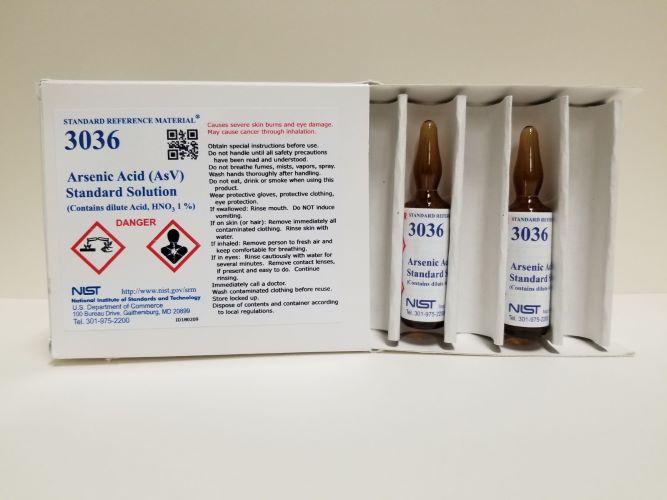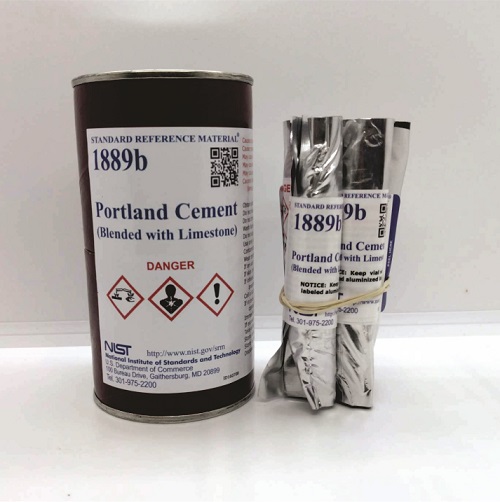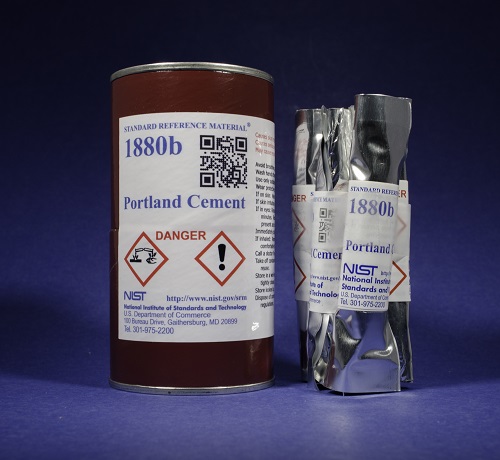| Table Number |
Table Title |
| 101.1 |
Plain Carbon Steels (chip form) |
| 101.2 |
Low Alloy Steels (chip form) |
| 101.3 |
Special Low Alloys Steels (chip and pin forms) |
| 101.4 |
High Alloy Steels (chip form) |
| 101.5 |
Gases in Ferrous Metals (rod and disk) |
| 101.6 |
Stainless Steels (chip and powder forms) |
| 101.7 |
Tool Steels (chip form) |
| 101.8 |
Low Alloy Steels (disk and rod forms) |
| 101.9 |
High Temperature Alloys (chip and disk forms) |
| 101.10 |
Stainless Steels (disk form) |
| 101.11 |
Specialty Steels (disk form) |
| 101.12 |
Steel Making Alloys (powder form) |
| 101.13 |
Cast Irons (chip form) |
| 101.14 |
Cast Steels, White Cast Irons, and Ductile Irons (disk and block form) |
| 102.1 |
Aluminum Base Alloys (chip and disk form) |
| 102.2 |
Cobalt Base Alloys (chip and disk forms) |
| 102.3 |
Copper Base Alloys (chip, granule, and rod forms) |
| 102.4 |
Copper Base Alloys (block and disk forms) |
| 102.5 |
Copper Benchmark (block and disk forms) |
| 102.10 |
Lead Base Alloys (disk and powder forms) |
| 102.12 |
Nickel Base Alloys (chip and disk form) |
| 102.15 |
Tin Base Alloys |
| 102.16 |
Titanium Base Alloys (chip and disk forms) |
| 102.17 |
Zinc Base Alloys (block, chip, and disk forms) |
| 102.18 |
Zirconium Base Alloys (chip form) |
| 103.1 |
Metals for Microprobes |
| 103.2 |
Synthetic Glasses |
| 103.4 |
Semiconductors |
| 104.1 |
High Purity Metals |
| 104.3 |
Stoichiometry |
| 104.4 |
Microchemistry |
| 104.5 |
Single Element Standards |
| 104.6 |
Arsenic Species |
| 104.8 |
Anion Chromatography |
| 104.9 |
Stable Isotopic |
| 104.10 |
Light Stable |
| 105.1 |
Clinical Laboratory Materials |
| 105.2 |
Serum, Plasma, Blood and Urine Clinical Laboratory Materials |
| 105.3 |
Ethanol Solutions |
| 105.4 |
Toxic Substances in Urine |
| 105.5 |
Vitamin D Metabolites for Clinical Laboratory Materials |
| 105.6 |
BioManufacturing |
| 105.7 |
Drugs of Abuse, Smoking Metabolites and Contaminants in Urine |
| 105.8 |
DNA Profiling and Nucleic Acid Materials |
| 105.9 |
Biomaterials |
| 105.10 |
Respirable Materials on Filter Paper |
| 105.12 |
Respirable Materials |
| 105.13 |
Lead in Paint, Dust, and Soil |
| 106.1 |
Metal Constituents in Natural Matrices |
| 106.3 |
Environmental Matrices with Carbon |
| 106.4 |
Mercury in Activated Carbon |
| 106.6 |
Used Auto catalyst |
| 106.7 |
Zeolites |
| 107.1 |
Carbon Monoxide in Air or Nitrogen |
| 107.2 |
Carbon Dioxide in Nitrogen |
| 107.3 |
Continental and Oceanic Air |
| 107.4 |
Hydrogen Sulfide in Nitrogen |
| 107.5 |
Organic Components in Air or Nitrogen |
| 107.6 |
Nitrogen Oxides in Air or Nitrogen |
| 107.7 |
Oxygen in Nitrogen |
| 107.8 |
Sulfur Dioxide in Nitrogen |
| 108.1 |
Alcohols and Ethers in Gasoline |
| 108.2 |
Metal Constituents in Fossil Fuels |
| 108.3 |
Sulfur, Mercury and Chlorine in Fuels |
| 108.3(1) |
Crude Oil |
| 108.3(10) |
Metallurgical Coke |
| 108.3(2) |
Gasoline |
| 108.3(3) |
Middle Distillates |
| 108.3(5) |
Di-n-Butyl Sulfide |
| 108.3(6) |
Residual Fuel Oil |
| 108.3(7) |
Petroleum Coke |
| 108.3(8) |
Subbituminous Coal |
| 108.3(9) |
Bituminous Coal |
| 108.4 |
Moisture in Oils and Alcohols |
| 108.6 |
Fossil Fuel Trace elements |
| 108.9 |
Biomass Feedstock |
| 109.1 |
Organics |
| 109.3 |
EPA: Organic Compounds Related to Water Analysis |
| 109.4 |
Crime Scene Investigations |
| 109.5 |
Perfluorinated and Polyfluorinated Alkyl Substances (PFAS) |
| 110.1 |
Foods and Beverages |
| 110.1(1) |
Macro- and Micronutrients |
| 110.1(2) |
Other Compounds of Interest |
| 110.2 |
Agricultural Materials |
| 110.4 |
Food Contaminants and Allergens |
| 110.5 |
Fertilizers |
| 110.6 |
Wheat Hardness |
| 110.9 |
Dietary Supplement Materials |
| 110.10 |
Tobacco Related Materials |
| 111.2 |
Ores |
| 111.3 |
Ore Bioleaching Substrate |
| 111.4 |
Clays |
| 111.5 |
Rock and Minerals |
| 111.6 |
Refractories |
| 111.7 |
Soils, Sediments, and Sludges |
| 112.1 |
Nitride |
| 112.2 |
Cemented Carbides |
| 112.3 |
Glasses |
| 112.4 |
Trace Elements |
| 113.1 |
Cements and Related materials |
| 113.2 |
Portland Cement Clinkers |
| 114.2 |
Lubricating Oils |
| 201.1 |
pH Calibration |
| 201.3 |
pD Calibration |
| 201.4 |
Ion-Selective Electrode Calibration |
| 202.1 |
Polymers |
| 202.2 |
Elements in Polymers |
| 203.1 |
Combustion Calorimetry |
| 203.2 |
Solution Calorimetry |
| 203.5 |
DSC and Differential Thermal Analysis |
| 203.8 |
Defining Fixed Point Temperature |
| 203.10 |
Reference Points |
| 203.11 |
Freezing Point, Melting Point and Triple point |
| 203.13 |
Thermocouple Materials |
| 203.15 |
Thermal Conductivity |
| 203.16 |
Thermal Expansion of Glass |
| 203.17 |
Thermal Resistance |
| 203.18 |
Thermoelectric Materials |
| 204.1 |
Molecular Absorption |
| 204.2 |
Optical Properties |
| 205.1 |
Radiation Dosimetry |
| 205.4 |
Radioactive Solutions |
| 205.5 |
Radiopharmaceuticals |
| 205.7 |
Carbon-14 Dating |
| 205.11 |
Radioactive Natural Matrix Materials |
| 206.1 |
Electrical Resistivity |
| 206.4 |
Superconducting Critical Current |
| 207.1 |
Scanning Electron Microscope |
| 207.3 |
Depth Profiling |
| 207.5 |
Non-magnetic Coating Thickness |
| 207.9 |
Microscale Dimension Measurement Standards |
| 208.1 |
Chemical Resistance |
| 208.2 |
Electrical Properties of Dielectrics |
| 208.3 |
Viscosity of Glass |
| 208.4 |
Glass Liquidus Temperature |
| 208.5 |
Viscosity Fixed Points |
| 208.6 |
Relative Stress Optical Coefficient |
| 208.8 |
Density |
| 209.1 |
Diffraction and Scattering |
| 301.1 |
Particle Size |
| 301.2 |
Cement and Coal Fly Ash Fineness |
| 301.3 |
Electrophoretic Mobility |
| 301.4 |
Surface Area Powders |
| 301.5 |
Particle Count Materials |
| 302.1 |
Microindentation Hardness |
| 302.2 |
Abrasive Wear |
| 302.4 |
Surface Roughness |
| 302.5 |
Rockwell Hardness |
| 305.4 |
Flooring Radiant Panel |
| 305.5 |
Standard Cigarettes for Ignition Strength and Ignition Resistance Testing |
| 308.1 |
Nanomaterials (less than or equal to 100 nm) |
| 309.1 |
Impact Standards |
| 309.4 |
Tape Adhesion Testing |
| 309.5 |
Bleached Kraft Pulps |
| 309.6 |
Secondary Ferrite Standards |
| 309.7 |
Fracture Toughness of Ceramics |
| 309.8 |
Magnetic Moment |
| 309.11 |
Standard Bullet Replica and Cartridge Case |
| 309.12 |
Force Calibration |




